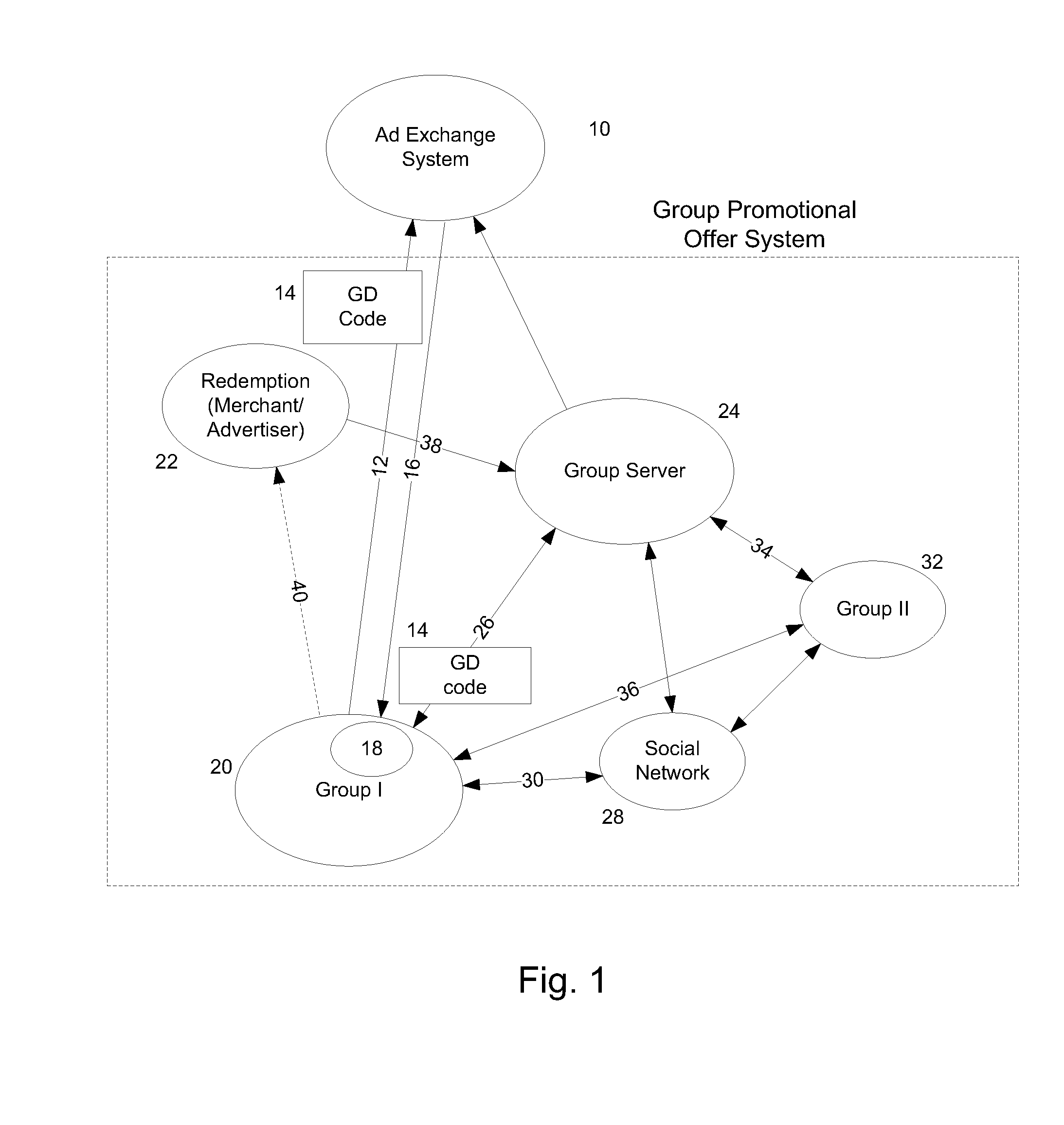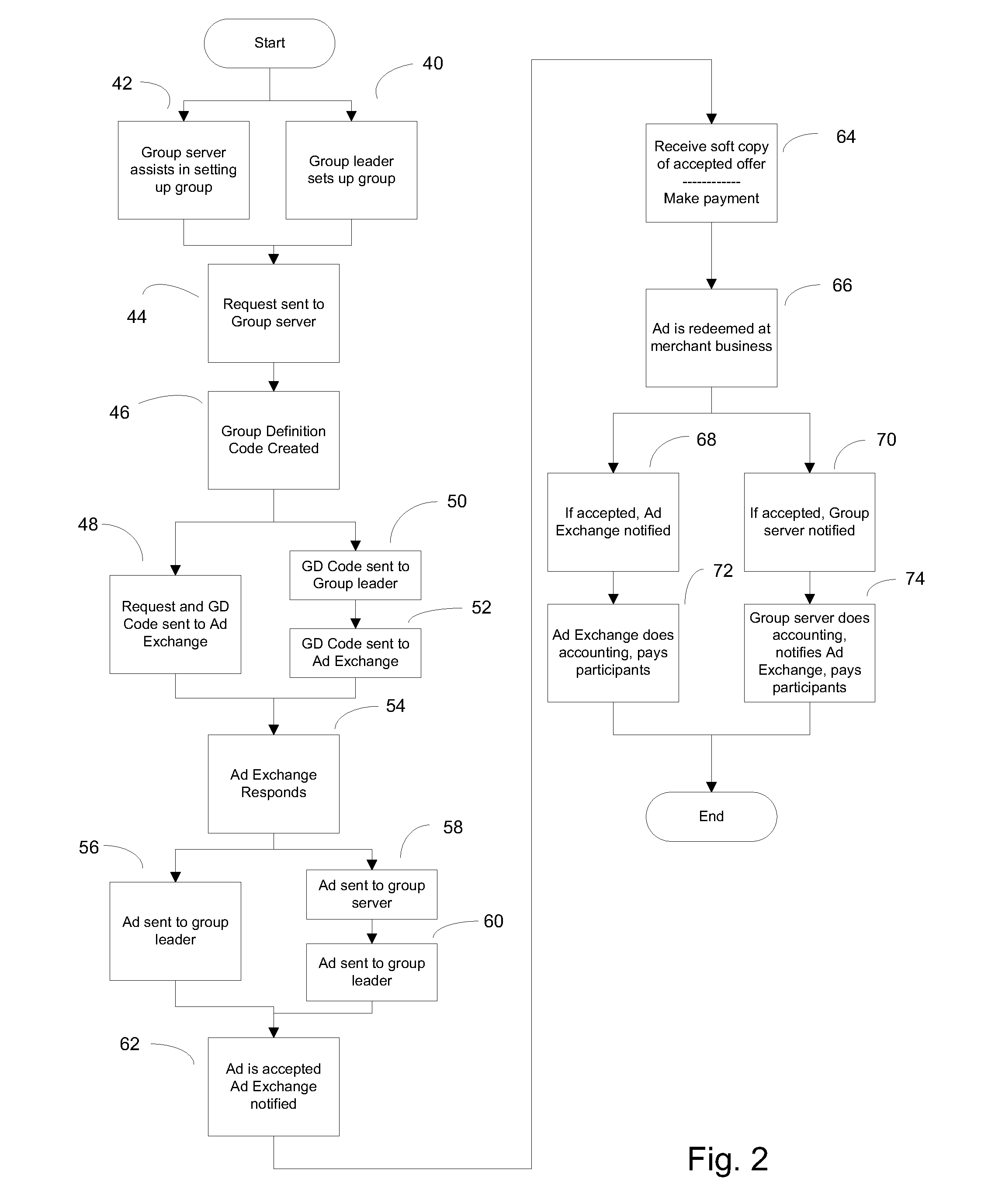System and method for creating and targeting marketing materials to groups on the basis of group composition
a marketing material and group composition technology, applied in the field of system and method for creating and targeting marketing materials to groups on the basis of group composition, can solve the problems of no advertising system, mismatch between units, limit the ability of advertisers to craft promotional offers,
- Summary
- Abstract
- Description
- Claims
- Application Information
AI Technical Summary
Benefits of technology
Problems solved by technology
Method used
Image
Examples
Embodiment Construction
[0032]FIG. 1 provides an overview of the system of this invention and its interaction with the ad-exchange industry. Individual embodiments may vary from this overview, which is presented only as a general model for conceptual understanding. Advertisements and promotions are maintained within a generic ad-exchange system 10 in which advertisers, web page publishers, and others may be participants. Each targeted promotional offer may be classified according to various parameters, which may include group size, gender mix, age range, geographic locale, time period for targeting, redemption, or use, and any other parameters a merchant may deem relevant. The invention encompasses methods for forming groups who may then solicit and accept promotions and other marketing devices.
[0033]In FIG. 1, a proprietary Group server 24 is in communication with user groups I and II, 20 and 32 respectively, across the internet or other wireless technology, such as cellular. An individual having a mobile...
PUM
 Login to View More
Login to View More Abstract
Description
Claims
Application Information
 Login to View More
Login to View More - R&D
- Intellectual Property
- Life Sciences
- Materials
- Tech Scout
- Unparalleled Data Quality
- Higher Quality Content
- 60% Fewer Hallucinations
Browse by: Latest US Patents, China's latest patents, Technical Efficacy Thesaurus, Application Domain, Technology Topic, Popular Technical Reports.
© 2025 PatSnap. All rights reserved.Legal|Privacy policy|Modern Slavery Act Transparency Statement|Sitemap|About US| Contact US: help@patsnap.com



